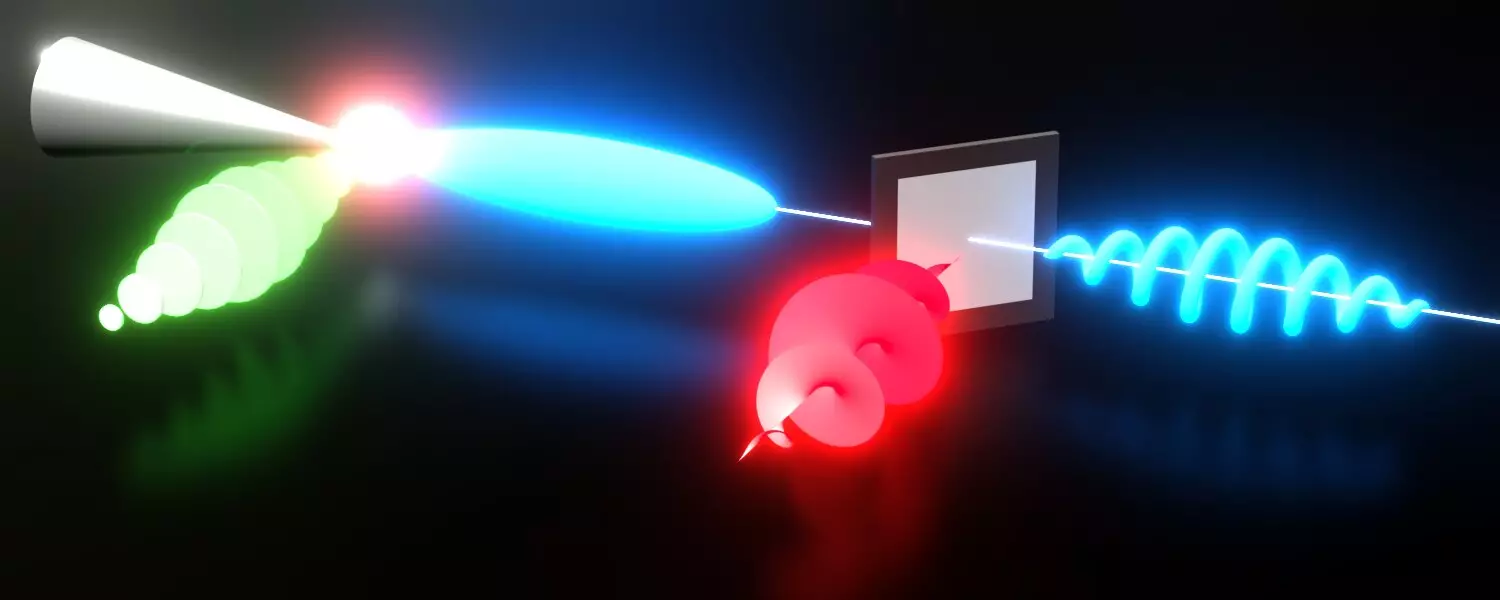Chirality is a captivating phenomenon in nature akin to the asymmetry one sees in human hands. No matter how you twist or turn, a left hand cannot transform into a right hand, a concept deeply rooted in both physics and chemistry. Researchers at the University of Konstanz have taken this idea a step further, manipulating chirality at the quantum level by imprinting it onto the wave function of an individual electron. Their groundbreaking findings challenge our understanding of quantum mechanics and may open the door to untapped avenues in science and technology.
A New Dimension of Chirality in Electrons
In this innovative research, scientists successfully crafted a three-dimensional chirality in an electron’s wave function, utilizing laser technology to sculpt the electron’s matter wave into left-handed or right-handed configurations. This developmental leap could revolutionize various fields such as quantum optics, particle physics, and materials science. Peter Baum, the lead researcher, emphasizes the unprecedented potential for scientific exploration: “We are opening up new potentials for scientific research that have not been considered before.” This statement underscores the profound implications of their work on both theoretical explorations and practical applications.
The significance of chirality extends beyond mere physical representation; it plays a vital role in the properties and behaviors of numerous materials. For instance, the impact of chirality in pharmaceuticals can distinguish between a beneficial medication and a toxic alternative, highlighting how seemingly minor geometric variations can result in vastly different biological effects.
Understanding Electrons: Spin versus Chirality
The concept of spin frequently intersects with chirality in quantum mechanics. While spin can be compared to a particle’s self-rotation, it is fundamentally distinct and lacks any classical Corollary. An electron has a spin of one-half, which allows it to exist in right-handed and left-handed states. However, the researchers at Konstanz took an innovative approach by creating chiral structures without relying on spin, showcasing a new realm where electrons take on organic geometries independent of their intrinsic properties.
Typically, researchers have explored electron motion along spiral paths or created vortex beams wherein the phase of the de Broglie wave rotates. The study from Konstanz, however, presented a novel methodology: they managed to form flat de Broglie waves while simultaneously shaping the charge and mass of the electron into a chiral form, enhancing our understanding of electron behavior at a fundamental level.
Cutting-Edge Techniques to Shape Electrons
Utilizing advanced technology, including an ultrafast transmission electron microscope and laser systems, the researchers developed femtosecond electron pulses and manipulated them through precisely controlled spiral electric fields. The interaction between these fields and the electrons was facilitated by silicon nitride membranes, permitting a previously impossible conservation of energy and momentum. The creative genius behind this interaction laid the groundwork for the unprecedented transformation of the electron’s wave function into a chiral coil, yielding right-handed and left-handed configurations that defy traditional understanding of electron behavior.
This geometrical chirality achieved by the Vortex coils is particularly significant, as it deviates from the previously established norm of relying solely on spin or angular momentum. An astounding revelation awaits when the effects of the newly generated electron coils interact with chiral materials, showcasing the potential for new types of interference phenomena.
Implications and Future Applications
The ability to engineer electrons into chiral formations signifies a monumental advancement in various scientific domains. Applications for the chiral electron beams may include the development of advanced electron-optical tweezers, chiral sensors, and enhanced imaging techniques in quantum electron microscopy. Furthermore, the implications for particle physics and quantum optics are profound, with opportunities for deeper exploration into the interplay of light and matter.
As Baum articulates, this pioneering method of manipulating electrons could extend beyond their current capabilities. “Although we have so far only modulated the electron, one of the simplest elementary particles, the method is general and applicable to almost any particle or matter wave.” This statement opens the door to future inquiries about other elementary particles that may exhibit similar chiral traits, urging scientists to consider repercussions that could ripple across the cosmos.
Moreover, the researchers plan to apply their findings to attosecond electron imaging and two-electron microscopy to refine the understanding of chiral interactions further. The ongoing exploration into the synergy between chiral light and matter waves indicates a bright future, teeming with possibilities for breakthroughs that could transform scientific paradigms and lead to innovations previously deemed unattainable. The tantalizing question persists: what other enigmas lurk within the subatomic world, waiting for the right conditions to be unveiled?


Leave a Reply